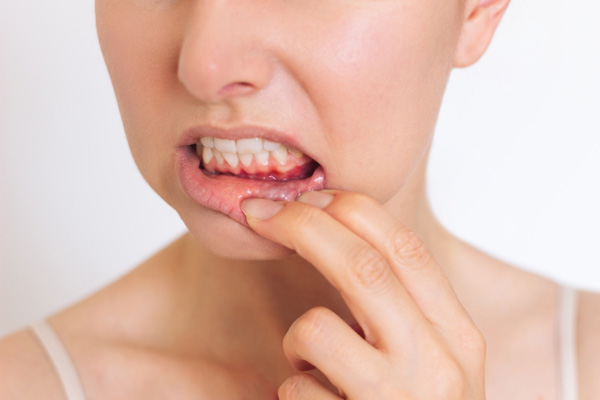A Periodontist Explains What a Periodontal Pocket Is

Your periodontist can help treat your periodontal pockets. Understanding these pockets is important before treatment happens. This will help motivate you to prevent future ones or reduce your risk of having them. If you want to know more about periodontal pockets, here are the details from a periodontist.
Formation of periodontal pockets
Millions of bacteria are present in the mouth. These microorganisms form plaque along the gumline. Failure to floss and brush every day leads to the formation of tartar. This then leads to inflammation and the onset of gum disease. Swelling, pain, and redness cause pockets to form between the gums and teeth.
These pockets become larger as the gums pull away from the teeth. More plaque and tartar get into those pockets. This results in more inflammation. The periodontal pockets become deeper. The jawbone is likely to develop an infection as well. The risk for tooth loss increases.
Detecting periodontal pockets
The common symptoms and signs of gum disease are bad breath, inflamed gums, longer teeth, and bleeding gums. Longer-looking teeth may be an indication of large periodontal pockets. The periodontist will see how deep the pockets are. This is possible with a periodontal probe. The probe will measure the periodontal pockets from the top of the gums to the bottom of the pocket. At least a four-millimeter depth will show the detachment of the gums from the tooth.
Treatment of periodontal pockets
The periodontist will give the patient a deep cleaning treatment. Another name for this is scaling and root planing. In this procedure, the dentist removes the tartar and plaque below the gumline and on the surfaces of teeth. The dentist smoothens the roots to prevent bacteria from sticking to them.
Professional dental cleanings can reduce the size of four to five-millimeter pockets. The treatment can continue at home with aggressive oral care practices. Brushing and flossing must happen at least two times a day. An antibacterial mouthwash will rinse out the remaining particles and kill the leftover bacteria. Removing tartar and plaque can also reduce gum inflammation.
Scaling and root planning can happen with an ultrasonic or laser device. Scalers and curettes can remove the plaque and tartar manually. This additional treatment can help smoothen the surfaces of the dental roots. This will allow the gum tissue to reattach to the tooth.
This helps shrink the gum pocket. The dentist can apply antibacterial gel into the gum pocket. This can reduce inflammation and kill more bacteria. An antibiotic mouthwash and oral antibiotics can help as well.
Flap or pocket reduction surgery can correct deep periodontal pockets. The dentist will make tiny incisions in the affected gum tissue. The dentist will then lift back the tissue. This exposes the dental roots.
This will enable deeper scaling and root planing. The dentist will smoothen the remaining jawbone in case there is significant bone loss. This will remove the grooves that bacteria thrive in. The dentist will then stitch back the gum tissue.
These treatments could reverse the effects of early-onset gum disease if there is no bone loss yet. Deep periodontal pockets will need surgical treatment. The periodontist will diagnose and discuss the most adequate treatment to help prevent tooth loss. After the treatment, the patient will start the journey toward regaining optimal dental health.
Different sizes and degrees of periodontal pockets
Variations in pocket depth let the periodontist know how severe the patient’s periodontitis is. The normal depth is one to three millimeters. The presence of mild periodontitis is evident with a pocket depth of four to five millimeters. Moderate periodontitis is at five to seven millimeters. Measurement of up to 12 millimeters will show advanced periodontitis.
The risk factors
A person’s risk of developing periodontal disease increases if the person fails to brush and floss twice a day. The same is true for people with a high-sugar diet. Sweets can make gingivitis and tooth decay worse. Smoking and chewing tobacco also contribute to periodontitis. Some medications, obesity, diabetes, stress, and genetics may lead to gum disease as well.
Your periodontist can give you more information about periodontal pockets
Deep periodontal pockets indicate advanced gum disease. You may not be aware of this until your next dental appointment. Awareness of these pockets can help you get the treatment you need at their early stages. Your periodontist will make sure you regain your oral health and prevent tooth loss.
Are you considering seeing a periodontist in the Plano area? Get more information at https://www.texasipc.com.
Check out what others are saying about our dental services on Yelp: Periodontics in Plano, TX.
Related Posts
Periodontics is a specialized field of dentistry that focuses on the prevention, diagnosis, and treatment of periodontal disease and other conditions affecting the gums, as well as the placement and maintenance of dental implants. It is essential for maintaining the gums' health and the teeth' supporting structures. If your dentist has recommended the care of…
Periodontal procedures are generally used to address oral health concerns such as periodontitis. However, many are surprised to learn about the cosmetic advantages surgical procedures from a periodontist can provide. This review discusses several procedures periodontists perform that have cosmetic uses and help to improve the health of the gums and jawbone.Notable periodontal cosmetic surgical…
There are various periodontal cosmetic procedures to choose from if you have missing teeth. Most people will lose at least one of their teeth at some point in their lives.Gum disease is the top cause of adults losing their teeth. It is a bacterial infection that leads to the inflammation of gum tissues. A periodontist…
Gum disease is a common condition among adults. Also known as periodontal disease, it occurs when bacterial attacks damage the gum and bone tissue that support teeth. Gum disease, along with its effects, often need to be treated before the placement of dental implants during the teeth replacement process.Much like natural teeth, dental implants are…
